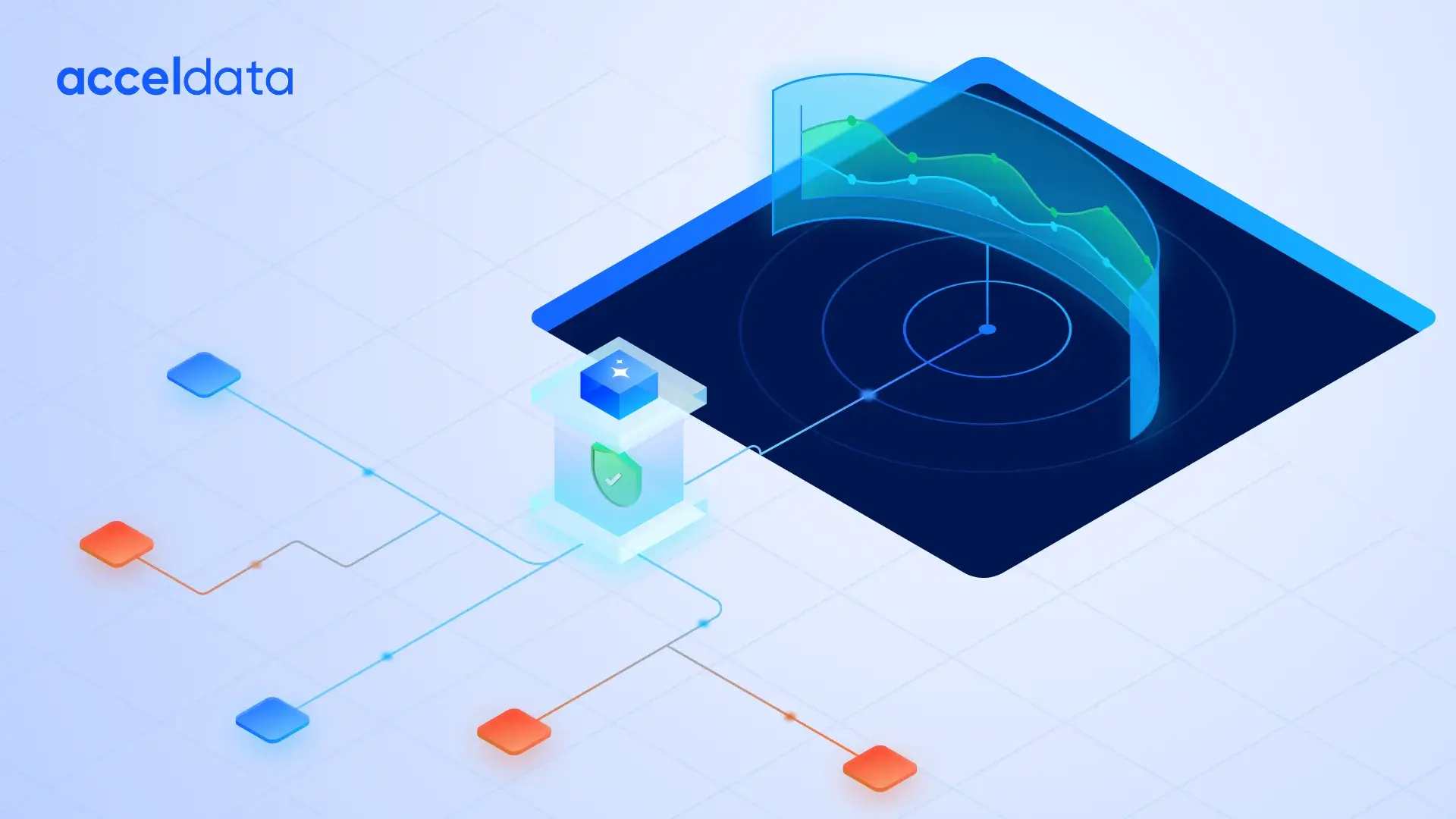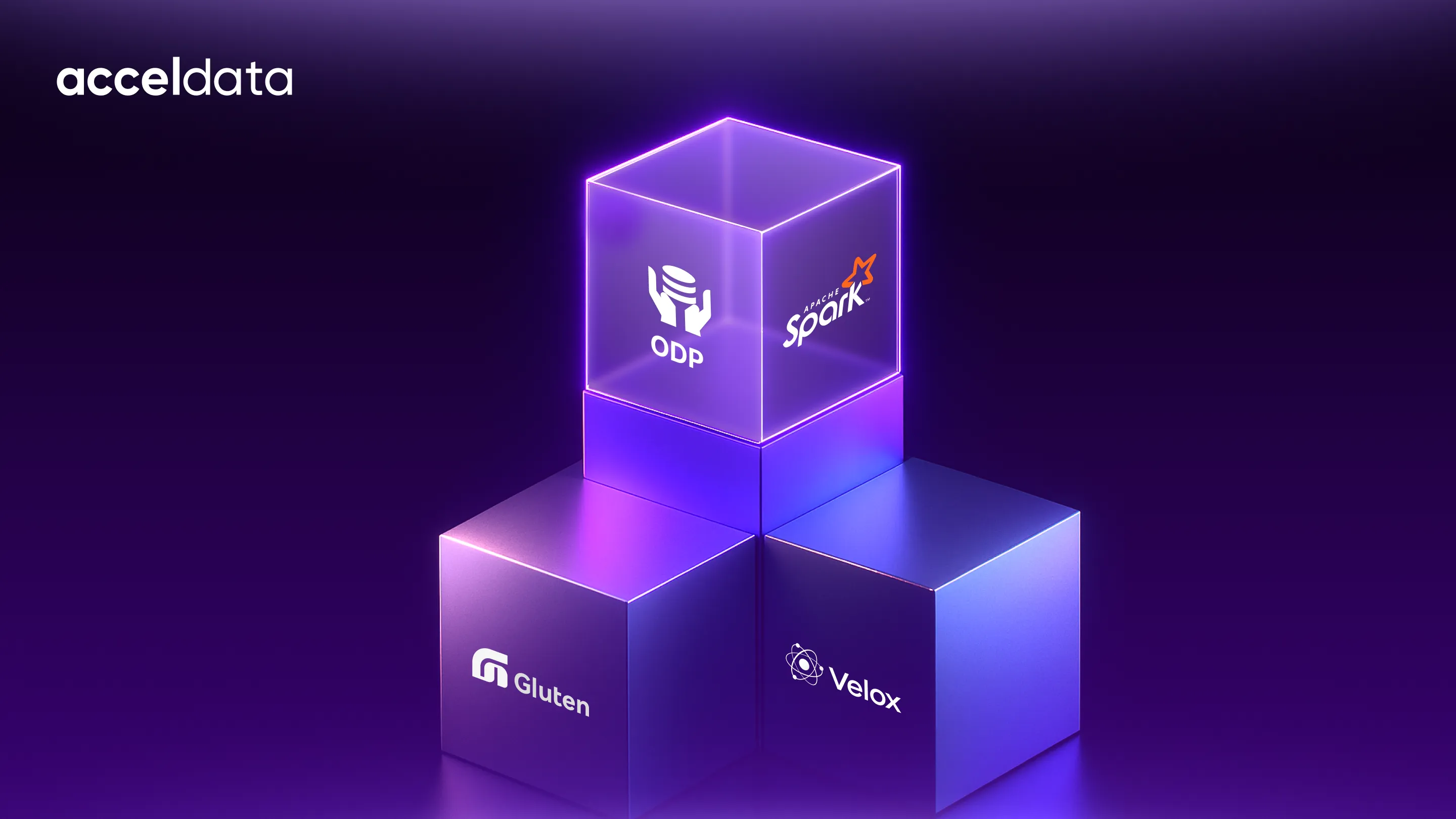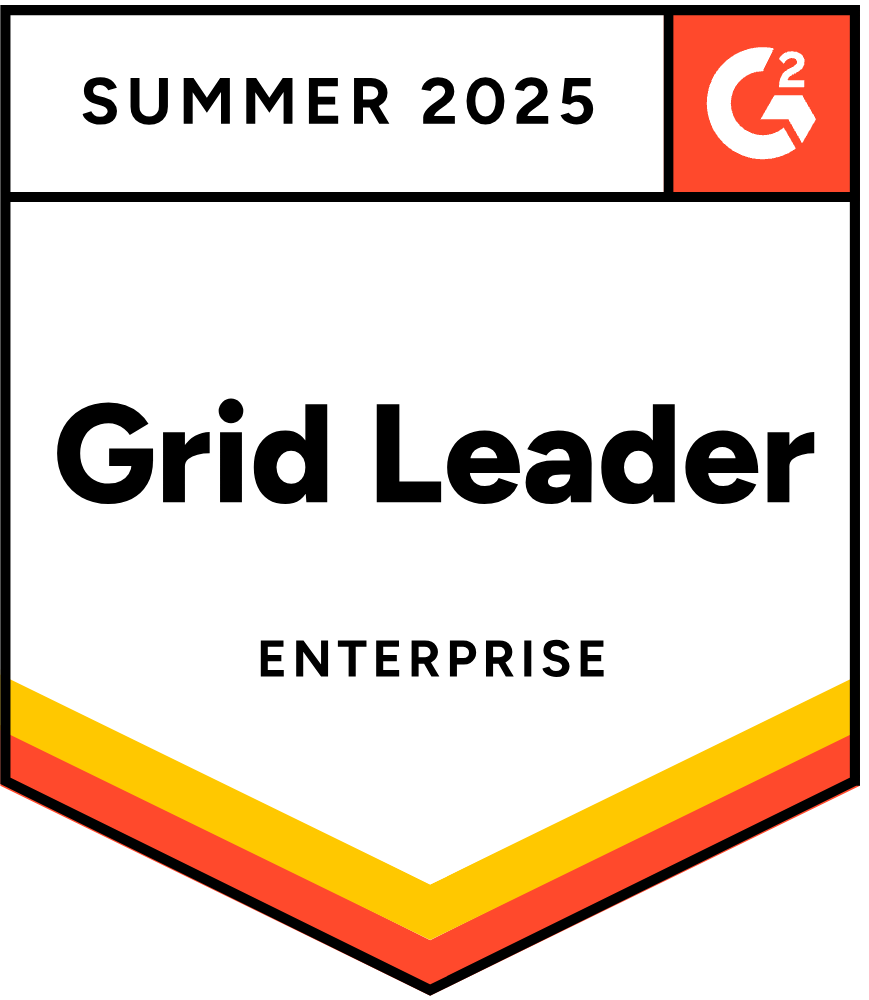Data has evolved beyond being a passive asset. Today, autonomous, policy-aware agents can plan, act, and learn to manage complex workflows with minimal human effort. This emerging capability, known as agentic AI, is reshaping how enterprises handle data, enabling systems that are adaptive, intelligent, and self-optimizing.
In fact, by 2028, Gartner predicts that 33% of enterprise software will embed agentic AI, underscoring its rapid adoption across industries.
At the core of this transformation lies the agentic AI framework, serving as the blueprint for building a closed-loop. These outcome-driven data ecosystems make your data workflows smarter, faster, and more scalable.
Let’s explore how this framework works and how it can transform your data operations.
What is the Agentic AI Framework?
The agentic AI framework serves as the foundation for building intelligent, autonomous agents that manage and optimise your data workflows from end to end. These agents are policy-aware; they don’t just follow predefined rules but actively plan, act, and learn as they operate across complex data systems. The multi-agent framework ensures that governance, quality, and compliance are built directly into your data operations.
Example: Imagine you run a global retail business with data flowing in from supply chains, stores, and e-commerce platforms. With an autonomous AI framework, autonomous agents can automatically detect data inconsistencies in sales reports, enforce compliance policies across regions, and optimize reporting workflows in real time, without requiring constant human intervention.
Agentic AI vs. Generic AI assistants
Here are the key differences between agentic AI and generic AI assistants:
By embedding intelligence, governance, and adaptability, the agentic AI framework enables your data systems to function as self-improving ecosystems, not just reactive tools.
Core Components of an Agentic AI Framework
The agentic AI framework is built on interconnected components that enable autonomous agents to plan, execute, and continuously optimize data workflows. They are:
- Planning and reasoning: Breaks down complex tasks, selects the right tools, and tracks progress toward defined goals.
- System connectors: Links to ELT/ETL pipelines, warehouses (Snowflake, Databricks, BigQuery), BI tools, ticketing systems, and IdPs so agents can act directly in your data ecosystem.
- Memory layer: Stores context, history, and policies using vector stores and knowledge graphs for smarter, consistent decisions.
- Policies and controls: Applies RBAC/ABAC, masking, retention, and compliance constraints to keep operations secure and compliant.
- Orchestration: Coordinates workflows via event buses, webhooks, and schedulers like Airflow or dbt.
- Feedback loop: Combines automated evaluations with human-in-the-loop oversight to keep agents aligned with business goals.
- Data observability: Monitors data lineage, freshness, completeness, and anomalies, triggering corrective actions when needed.
Together, these components make the agentic AI framework a closed-loop system, one that plans, acts, monitors, and improves continuously across your data landscape.
Reference Architecture: How the Framework Operates
More than 80% of companies still report no material contribution to earnings from their GenAI initiatives. The reason? Most projects rely on generic assistants that generate outputs but don’t improve the way enterprise data actually runs. This is where the agentic AI framework makes a difference.
At the heart of the agentic AI framework is a continuous Sense → Plan → Act → Learn loop. This cycle ensures that data workflows are not just automated but adaptive, policy-aware, and outcomes-driven.
- Sense: The framework ingests data, metadata, and telemetry from your systems to understand the current state.
- Plan: The planner selects the right tools and workflows, guided by embedded governance and compliance policies.
- Act: Actions are executed across your data stack with guardrails in place, ensuring tasks remain secure and compliant.
- Learn: Outcomes are evaluated, success criteria are applied, and results are stored in memory for future decision-making.
Integration points that matter:
For the framework to deliver real value, it must connect effortlessly with the broader enterprise ecosystem. Key integration points include:
- ITSM platforms for ticketing and issue resolution
- Identity providers (IdP) for secure access and policy enforcement
- CI/CD pipelines for embedding data workflows into broader engineering processes
Together, these elements form a closed-loop AI agent architecture where sensing, planning, acting, and learning happen continuously. Instead of isolated AI pilots, you get an intelligent system that orchestrates data operations across your enterprise, making your workflows more adaptive, compliant, and outcomes-driven.
What The Framework Enables for Data Teams
For data teams, the agentic AI framework turns routine operations into intelligent, automated processes. Instead of firefighting issues, your team can focus on higher-value work.
Here’s how it helps:
- Trustworthy data at scale: The framework detects data anomalies, traces lineage, and can fix or roll back errors automatically. It also enforces governance by classifying PII, applying masking, and validating access controls in real time.
- Smarter access and governance: With just-in-time access, automatic revocations, and periodic reviews, security becomes proactive rather than reactive. Catalogs are enriched through auto-tagging, glossary mapping, and asset certification, making data easier to find and reuse.
- Operational efficiency: From optimizing warehouse spend and improving query performance to triggering runbooks and opening ITSM tickets during incidents, the framework reduces manual workloads while keeping systems cost-efficient and reliable.
In short, data teams gain a system that’s self-healing, policy-aware, and performance-optimized, freeing them to focus on delivering insights instead of managing breakdowns.
Measurable Benefits and Key Metrics
Consider how reimagining workflows around agentic AI drives measurable business impact. Just as a call center can boost productivity and reduce resolution times by embedding autonomous agents, data teams can achieve similar breakthroughs when AI agents operate across data workflows proactively.
With this approach, common data incidents could be resolved autonomously, resolution times could drop, and human teams can focus on exceptions and strategic decision-making rather than routine tasks.
By deploying an agentic AI framework, enterprises can realize outcomes such as:
- Faster issue resolution: Reduce mean time to remediation (MTTR) for data incidents and minimize policy violations
- Improved data quality and ownership: Increase the percentage of certified or fully owned data assets and ensure more datasets meet quality thresholds
- Streamlined access management: Shorten access request cycles and enforce just-in-time permissions automatically
- Operational efficiency: Cut audit preparation time and enhance overall governance and control effectiveness
These measurable KPIs demonstrate that agentic AI doesn’t just automate tasks; it transforms data operations into adaptive, self-optimizing systems that deliver both compliance and strategic business value.
Build vs. Buy: Selecting an Agentic AI Framework
When selecting an agentic AI framework, data teams must weigh whether to build an in-house solution or adopt a ready-made one. Key factors to consider include:
- Connector coverage: Does the framework integrate with your data sources, warehouses, BI tools, and operational systems?
- Actionability: Can it detect issues, decide on the best course, and act autonomously?
- Explainability: Are decisions transparent and traceable for stakeholders?
- Governance depth and security: Does it enforce policies, access controls, and compliance effectively?
- Total cost of ownership (TCO) / Time-to-value: How quickly will it deliver ROI compared to building from scratch?
Quick comparison: Build vs. buy
The table below highlights key differences between building an agentic AI framework in-house versus adopting a prebuilt solution:
This matrix helps you quickly assess whether a ready-made agentic AI framework or a custom-built solution is best suited for your enterprise needs.
Implementation Roadmap for Agentic AI Deployment
Once you’ve decided whether to build in-house or adopt a prebuilt agentic AI framework, the next step is a structured rollout. A clear plan helps you deploy efficiently and achieve measurable impact. Here’s a 30-60-90 day plan for you to get started:
- 0–30 Days: Connect data sources, establish baseline lineage and quality, and define governance policies.
- 31–60 Days: Pilot agentic workflows such as data quality remediation and access reviews, incorporating human-in-the-loop oversight.
- 61–90 Days: Scale across domains, automate evidence packs, and generate executive scorecards to track impact.
This phased roadmap ensures a smooth rollout, measurable early wins, and scalable long-term adoption.
Security, Risk, and Compliance Guardrails
As you roll out the agentic AI framework, it’s crucial to embed strong safeguards that protect sensitive data and reduce operational risk. These include:
- Data protection: Detect PII/PHI and enforce least-privilege access.
- Human oversight: Require approvals for sensitive actions and maintain full audit trails.
- Compliance controls: Ensure adherence to regional data residency and regulatory requirements.
By integrating these guardrails from the start, you ensure that automation remains safe, secure, and fully compliant as workflows scale.
Real-World Use Cases
Agentic AI frameworks are transforming data operations across industries by automating complex workflows, ensuring compliance, and driving operational efficiencies. Below are sector-specific examples demonstrating these impacts:
Financial services
In the financial sector, agentic AI enhances compliance and security measures such as:
- SOX/GLBA lineage evidence: Automated lineage tracking ensures adherence to Sarbanes-Oxley (SOX) and Gramm-Leach-Bliley Act (GLBA) requirements, facilitating audits and reducing manual oversight.
- Suspicious access auto-quarantine: AI agents monitor access patterns to detect anomalies, automatically quarantining suspicious activities to prevent potential breaches.
Example: A top national consumer bank reduced SLA breaches by 96%, avoided over $10 million in fines, and reclaimed millions in lost revenue by modernizing its data operations with Acceldata’s AI-driven governance platform.
Healthcare
In healthcare, agentic AI supports regulatory compliance and data privacy through:
- HIPAA tagging: AI agents automatically classify data to ensure compliance with the Health Insurance Portability and Accountability Act (HIPAA).
- Break-glass logging: Sensitive data access is logged, with AI monitoring for unusual access patterns, ensuring accountability.
- PHI masking: Personal Health Information (PHI) is masked during processing to protect patient privacy.
Example: With Acceldata, a global life sciences leader unified ESG-financial data across 200+ markets, cutting errors by 80% and filings by 30%.
Retail and e-Commerce
In retail and e-commerce, agentic AI optimizes data operations through:
- Consent-aware activation: AI ensures that customer data is used in compliance with consent preferences, enhancing trust and legal compliance.
- Catalog hygiene: AI agents automatically update and cleanse product catalogs, improving data accuracy.
- Supply chain alerts: AI monitors supply chain data, providing real-time alerts for potential disruptions.
Example: A global retail giant operating across 2,000+ brands and 30,000+ products faced post-migration challenges after moving from SAP to Snowflake. By deploying Acceldata's platform, the company profiled 63K tables, automated 1,000+ data quality checks, and reconciled critical data, boosting BI accuracy and cutting Snowflake costs by 35%.
Data platforms
For data platforms, agentic AI enhances development and operational workflows through:
- Schema drift gates in CI/CD: AI monitors schema changes during continuous integration and deployment, preventing disruptions.
- DBT test routing: AI directs data tests to appropriate environments, ensuring efficient validation processes.
Example: A global information provider partnered with Acceldata to deploy a data observability platform, automating issue resolution and enabling business analysts to create and deploy custom rules in under a day, reducing processing time and enhancing scalability.
These use cases illustrate how agentic AI frameworks can drive significant improvements in compliance, efficiency, and scalability across various industries.
Turn Data Workflows into Self-Optimizing Systems with Acceldata
The agentic AI framework marks a clear shift from static, rule-based operations to adaptive, autonomous, and policy-aware systems. By embedding intelligence, governance, and continuous learning into data workflows, enterprises can reduce manual effort, improve compliance, and accelerate decision-making at scale.
With solutions like Acceldata’s agentic data management (ADM) platform, organizations gain a proven path to implement these frameworks effectively, unlocking self-healing data pipelines, stronger governance, and measurable business outcomes. As agentic AI adoption accelerates, enterprises that embrace it now will be the ones setting new standards for trust, agility, and performance in the data-driven future.
Ready to operationalize an agentic AI framework? See how Acceldata unifies observability, active metadata, and agentic automation to deliver closed-loop data outcomes. Request a demo today.
FAQs about Agentic AI Framework
- How is an agentic AI framework different from a data catalog or RPA?
An agentic AI framework goes beyond catalogs or RPA by enabling autonomous data workflows that sense, plan, act, and learn. Unlike static tools, it delivers closed-loop data automation with policy-aware decision-making.
- Do I need LLMs for every workflow?
Not every workflow requires LLMs; the framework can leverage agentic AI tools for data teams using specialized algorithms for data quality, governance, and orchestration. LLMs are optional for tasks needing language understanding or complex reasoning.
- How do we keep agents compliant and auditable?
Compliance is enforced through policies, guardrails, and audit trails, with all actions logged for transparency. This ensures autonomous data governance is traceable and fully auditable.
- What KPIs prove ROI?
Track metrics such as reduction in MTTR for incidents, policy violations, and access request cycles, along with increases in certified/owned assets and datasets meeting data quality thresholds.
- What proofs are generated for audits?
The framework generates lineage records, policy enforcement logs, and evidence packs documenting automated actions. These proofs support regulatory compliance and agentic AI orchestration validation.














.webp)
.webp)


